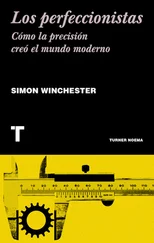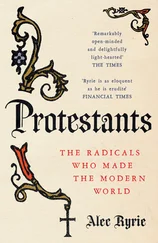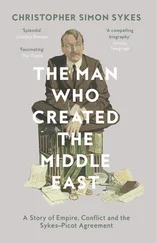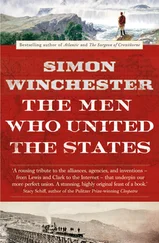Though more than a half century has elapsed since those machine-happy days of my childhood, the memory still exerts a pull—and never more so than one afternoon in the spring of 2011, when I received, quite unexpectedly, an e-mail from a complete stranger in the town of Clearwater, Florida. It was headed simply “A Suggestion,” and its first paragraph (of three) started without frill or demur: “Why not write a book on the History of Precision?”
My correspondent was a man named Colin Povey, whose principal career had been as a scientific glassblower. *The argument he put forward was persuasive in its simplicity: precision, he said, is an essential component of the modern world, yet is invisible, hidden in plain sight. We all know that machines have to be precise; we all recognize that items that are of importance to us (our camera, our cellphone, our computer, our bicycle, our car, our dishwasher, our ballpoint pen) have to sport components that fit together with precision and operate with near perfection; and we all probably suppose that the more precise things are, the better they are. At the same time, this phenomenon of precision, like oxygen or the English language, is something we take for granted, is largely unseen, can seldom be fully imagined, and is rarely properly discussed, at least by those of us in the laity. Yet it is always there, an essential aspect of modernity that makes the modern possible.
Yet it hasn’t always been so. Precision has a beginning. Precision has a definite and probably unassailable date of birth. Precision is something that developed over time, it has grown and changed and evolved, and it has a future that is to some quite obvious and to others, puzzlingly, somewhat uncertain. Precision’s existence, in other words, enjoys the trajectory of a narrative, though it might well be that the shape of that trajectory will turn out to be more a parabola than a linear excursion into the infinite. In whichever manner precision developed, though, there was a story; there was, as they say in the moviemaking world, a through line.
That, said Mr. Povey, was his understanding of the theory of the thing. Yet he also had a personal reason for suggesting the idea, and to illustrate it, he told me the following tale, which I offer here in summary, a mix of precision and concision:
Mr. Povey Sr., my correspondent’s father, was a British soldier, a somewhat eccentric figure by all accounts who, among other things, classified himself as a Hindu so that he would not be obliged to attend the normally compulsory Sunday Anglican service. Not wishing to fight in the trenches, he joined the Royal Army Ordnance Corps, the body that has the responsibility of supplying weapons, ammunition, and armored vehicles to those soldiers who used such things in battle. (The RAOC’s functions have since expanded, and now, less glamorously, it also runs the army’s laundry and mobile baths and does the official photography.)
During training, he learned the rudiments of bomb disposal and other technical matters, excelling at the engineering aspects of the craft, and thus qualified, he was sent in 1940 to the British embassy in Washington, DC (in secret, and wearing civilian clothes, as the United States had so far not joined the war). His duties were mainly to liaise with American ammunition makers to create ordnance that would fit into British-issued weapons.
In 1942, he was given a special mission: to work out just why some American antitank ammunition was jamming, randomly, when fired from British guns. He promptly took a train to the manufacturers in Detroit and spent weeks at the factory painstakingly measuring batches of ammunition, finding, to his chagrin, that every single round fitted perfectly in the weapon for which it was destined, meeting the specifications with absolute precision. The problem, he told his superiors back in London, did not lie with the plant. So London told him to follow the ammunition all the way to where the commanders were experiencing the vexing misfires, and that was in the battlefields of the North African desert.
Mr. Povey, lugging along his giant leather case of measuring equipment, promptly lit out for the East Coast. He first traveled on a variety of ammunition trains, passing slowly across the mountains and rivers of eastern America, all the way to Philadelphia, whence the ordnance was to be shipped. Each day, he measured the shells, and found that they and their casings retained their design integrity perfectly, fitting the gun barrels just as well at each of the railway depots as they had when they left the production lines. Then he boarded the cargo ship.
It turned into something of a testing journey: the vessel broke down, was abandoned by its convoy and its destroyer escort, became frighteningly vulnerable to attack by U-boats, and was trapped in a mid-ocean storm that left all of the crew wretchedly seasick. But, as it happened, it was this deeply testing environment that allowed Mr. Povey finally to solve the puzzle.
For it turned out that the severe rocking of the ship damaged some of the shells. They were stacked in crates deep in the ship’s hold. As the vessel rocked and heeled in the storm, those crates on the outer edges of the stacks, and only those, would crash into the sides of the ship. If they hit repeatedly, and if when they hit they were configured in such a way that the tip of the ammunition struck the wall of the hold, the whole of the metal projectile at the front end of each shell—the bullet, to put it simply—would be shoved backward, by perhaps no more than the tiniest fraction of an inch, into its brass cartridge case. This collision, if repeated many times, caused the cartridge case to distort, its lip to swell up, very slightly, by a near-invisible amount that was measurable only by the more sensitive of Povey’s collection of micrometers and gauges.
The shells that endured this beating—and they would be randomly distributed, for once the ship had docked and the stevedores had unloaded the crates and the ammunition had been broken down and sent out to the various regiments, no one knew what order the shells would be in—would, as a result, not fit into the gun barrels out on the battlefield. There would, in consequence, be (and entirely randomly) a spate of misfires of the guns.
It was an elegant diagnosis, with a simple recommended cure: it was necessary only for the factory back in Detroit to reinforce the cardboard and wood of the ammunition crates and—presto!—the shell casings would all emerge from the ship unbruised and undistorted, and the jamming problem with the antitank rifles would be solved.
Povey telegraphed his news and his suggestion back to London, was immediately declared a hero, and then, in classic army style, was equally immediately forgotten about, in the desert, without orders, but with, as he had been away from his office in Washington for so long, a considerable amount of back pay.
Hot work in the Sahara it must have been, for at this point the story wavers a little: Mr. Povey Sr. seems to have gone on some kind of long-drawn-out desert bender. But after enjoying the sunshine for an indecent number of weeks, he decided that he did in fact need to return to America, so he bribed his way back there with bottles of Scotch whisky. It took him eleven bottles of Johnnie Walker to get from Cairo (via a temporary aerodrome in no less exotic a wartime stopover than Timbuktu) to Miami, after which it was but a short and easy hop up to Washington.
There he found dismaying news. It turned out that he had been away in Africa for so long without any communication that he had been declared missing and presumed dead. His mess privileges had been revoked, his cupboard closed, and all his clothes altered to fit a much smaller man.
It took a while for this discomfiting mess to be sorted out, and when eventually everything was more or less back to normal, he discovered that his entire ordnance unit had been transferred to Philadelphia—to which he promptly went as well.
Читать дальше












